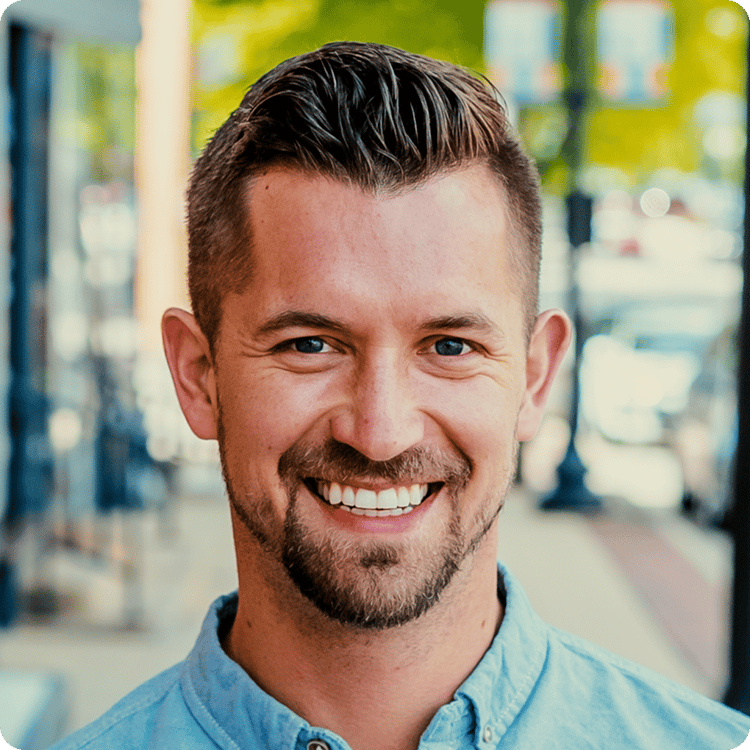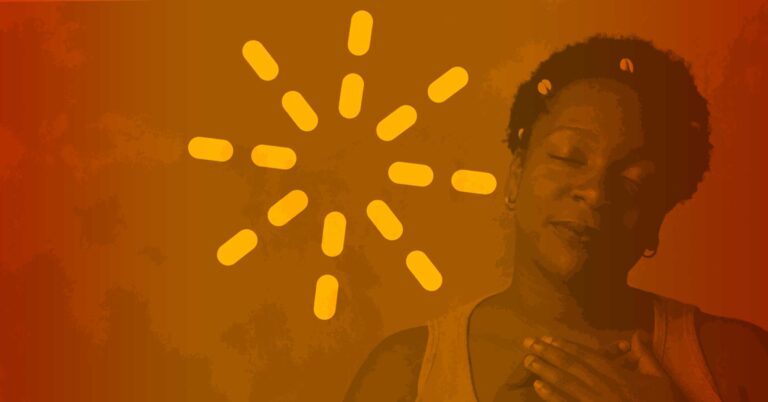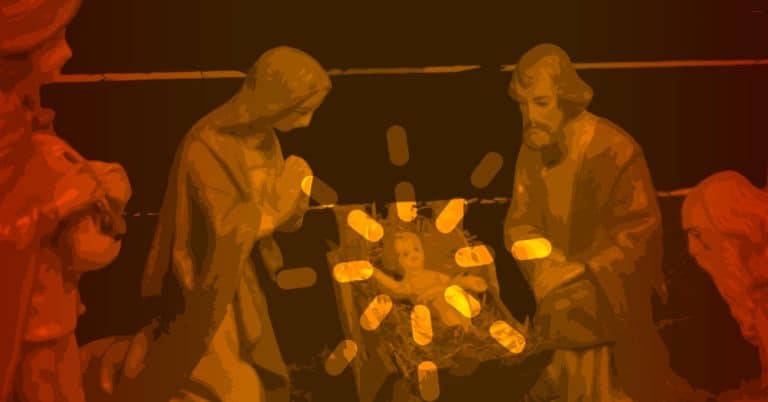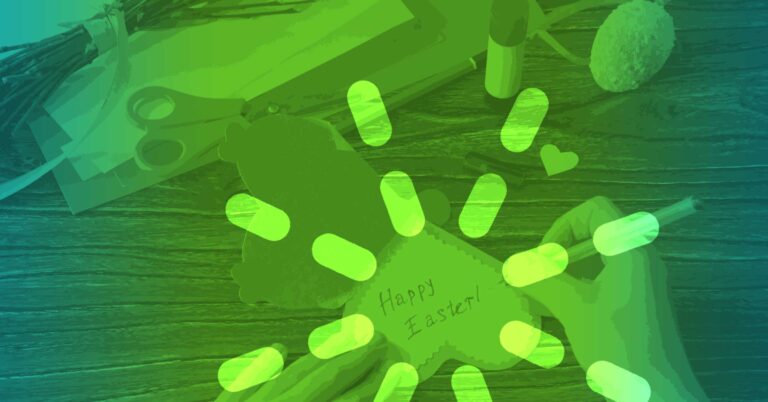Editor’s Note: This interview is adapted from our Ministry Spark webinar, Help Children and Teens Thrive After the Impacts of COVID-19 for ease of reading. You can watch the full webinar here.

Host, Byron Ragains:
Today we are going to talk about how the pandemic is affecting our kids and teens—and how we can help. We have two great speakers with us today, and I’m excited to introduce them.
Courtney Wilson is the kid’s pastor at Christ Community Church in St. Charles, Illinois, a suburb of Chicago. She has been in children’s ministry for over 20 years in churches of various sizes. She is passionate about equipping parents and kids to respond to God and about the discipleship of people through serving. Courtney has three sons, one daughter, and is known as the loudest mom during their cross country races.
Bobby Jackson is a pastor, licensed therapist, and leader in the field of student care. Bobby has spent over 16 years developing programs and training leaders to help hurting people find healing. He holds a BA in youth ministry from Moody Bible Institute in Chicago and a master’s degree in social work from the University of Chicago.
I bring to you both Courtney Wilson and Bobby Jackson. Let’s dive in.
Scripture says that God is near to the brokenhearted. And so, if He’s near to the brokenhearted and your child is brokenhearted, then I know where He is.
Courtney Wilson

Courtney Wilson:
What’s really fun about this is that Bobby and I actually were on staff together at the church where I’m currently serving. Bobby and I have had the honor to work together quite often on things. And when I need help, he is who I call. And we want to help you today as you help families get on the other side of this.
Trauma is a significant event, right? It can cause overwhelming amounts of stress that kind of get us to this point where we can’t cope. I think what we would like to discuss today is how we help families cope. How do we put tools in their hands? How do we facilitate the ministry that we need to do? Because as they are looking around, they’re often looking to us in the church for help. How do we walk through this with families?
As I was talking to Bobby about some of this, we were talking about the word trauma specifically. I recently attended a workshop where someone had said, Hey, we’re just going to take a moment and write out the last seven months of time—to remember everything that happened. And she said, We’ve all been through a trauma.
So, Bobby, as a therapist, talk about how you see this.

Bobby Jackson:
Absolutely. Thank you, Byron. Thank you, Courtney, for those very generous introductions. I appreciate it.
A lot of people are throwing the word trauma around as a descriptive word for what’s happening during COVID. I think the more helpful phrase is the precondition for trauma. It becomes a trauma when it overwhelms us.
I was in a webinar with Dr. Bessel van der Kolk, who’s one of the foremost scholars in the US on trauma. And one of the things he said is that in this context, we all are releasing our stress hormone cortisol. And, so, every person on the planet has been releasing this hormone. That hormone is what we use to deal with stress. Usually, it sends us into fight or flight. So, our bodies want to go into fight or flight, but with COVID we have lost the ability for flight.
We are all in this fight or flight mode, and we’re trapped. And that’s where trauma can happen. It takes place in an experience where we are trapped with cortisol pumping through our bodies. This is why most of us feel that sense of agitation. It’s why we’re angrier easier. It’s why our kids are angrier easier and why they’re bouncing off the walls so often.
So, it’s really important to understand what’s actually happening. In order to understand how it’s affected us in the already and how we can kind of move forward, we have to understand the implications of COVID on our total being.
The Four Quadrants
To keep it really simple, I think of this in four quadrants. Every person has a physical part, a social part of them, a mental or emotional part of them, and a spiritual part of them. Especially when I think about kids and teens, the physical part of this is profoundly affected.
When I was growing up, we used to go to the mall. That was our space to hang out. And the current generation’s space is social media. The pandemic has created a major change on our actual physical space, but it also has affected things like our nutrition. We’re all eating differently, whether for good or for bad. The ability to exercise and our sleep patterns are super different. The way we hydrate is different.
We’re in front of different desks, different toxins, different medications, and different illnesses to the point where it’s actually affecting our hormones. So, there are all of these physical elements. And it’s not just one—it’s affected every part of the way we exist as physical beings.
All this to say, it’s not all bad. Everything has changed all throughout history. It’s just different. Trying to understand the differences in a comprehensive way allows us to think about how we can move forward.
We are all in this fight or flight mode, and we’re trapped. And that’s where trauma can happen.
Bobby Jackson
Let me lob this back at you, Courtney, and ask What are you seeing in terms of the physical effects on kids and what are the questions that parents of younger kids asking?

Courtney Wilson:
We’re seeing the physical side of this as well. And for kids I think about the hierarchy of needs. For example, previously as kids came into a weekend service, I would watch their behavior. If they acted out, one of my first questions used to be, did you eat breakfast this morning? Because that is a perfect example of how a child might be behaving out of a physical need. They might just need a Graham Cracker—and that’s okay.
So, in all of this, we should look at the hierarchy of needs in this time.
Meeting Kids’ Needs
I have an 11-year-old daughter in fifth grade. She had been doing school in person for the most part, but they took an adaptive pause in December. That’s fancy for “they were online learning only.” And, so, my daughter said to me, Hey mom, you know, what would be the perfect stocking stuffer for me? It would be a pair of blue-light-blocking glasses.
Yeah, she’s 11. That’s a gift for 40-year-old’s, right? The perfect stocking stuffer for an 11-year-old is some Lip Smackers. But she has a felt need that she’s experiencing in the form of headaches. And she’s saying, I’m having headaches and I need you to help me. She’s old enough that she can express that verbally.
We have four-year-old’s who are expressing things in different ways because they’re feeling physical effects of this.
So, what I’m hearing from parents is what do I do with a kid who has (insert physical need) every day? My ophthalmologist told me that she has put glasses on more kids in the past 7 months than she had previously in a few years.
The Physical Impacts the Whole
Our kids are experiencing physical discomforts, which are then going to bleed into the other areas of their lives. They might be losing sleep, having headaches, having a hard time getting off screens, or maybe even struggling to separate home from school. All of a sudden, all of our kids had to invite their teachers into their homes.
Most of the questions I’m getting from parents either have to do with, what do I do with my child, who’s really experiencing headaches (or stomach aches, anxiety, etc.). Then also questions related to that loss of physical movement as well—they need places where their kids can physically move. We’re in Chicago. So, there’s like 10 feet of snow on the ground and kids are stuck in their houses.
But the same things that you’re seeing for teenagers, we’re seeing it for kids too. It’s hard.
What are you seeing in terms of trends amongst teens? How are they coping with being physically isolated?

Bobby Jackson:
It’s really interesting and tricky for teenagers. As you move from middle school into high school in terms of stages of development, you are moving into a stage where you are supposed to develop your identity. We figure out what groups we fit in, what we’re good at, and what we like.
It’s been an especially tricky year, when you take away most of their points of reference. They don’t have their typical hangouts or spaces. And the trade out has been all the screens. So, every kid is spending 6 hours online for school, and then what used to be their place of retreat—their screens—is no longer only that.
One of the studies I read recently shared that in a day or two, a kid today is seeing what somebody else from a previous generation would see in their whole life in terms of advertising. It’s like insane. Because if you’re going to spend 10 to 12 hours on your phone in a day, you’re going to see hundreds or thousands of different types of advertising and information.
Information Overload
There are studies saying that the amount of information we absorb is now beginning to affect our memory. We don’t use our memories the same way we used to. Fifty years ago, we memorized things and today we don’t—we put it in the cloud.
In terms of the social piece, these kids are supposed to develop their sense of identity when they have hundreds of thousands of points of reference in terms of information, but none of it’s in person. It is a big piece we have to be thoughtful of.
And considering when we’re thinking about How do I help my young people move through this stage?, keep in mind that you learned your identity differently from how kids will learn their identity today. Again, it’s not a bad thing, it’s a different thing. That’s how we connect socially—so it is the mall of today. We don’t bulldoze the mall.
Taking Away the Mall
And a sidebar, almost every high school student that I have in therapy, their parents have taken away phones as a primary punishment tool. And I would just say to exercise caution. That is literally like bulldozing all of their social interaction in this time.
I’m not saying it’s a bad thing to take away a phone. I think a lot of times it’s really helpful, but it’s important to be thoughtful and realize the gravity of what you are taking. It literally takes away this mega dopamine rush and their primary social circles all at the same time.
When you take it, it’s not grounding them from going to the mall, it’s grounding them from going to school, and the mall, and sports, etc.
I’ll throw it back at you, Courtney.
What are the things that you’ve seen changed for good and bad?

Courtney Wilson:
I think some people worry about extroverted kids and introverted kids in this time—in different ways. Specifically, with introverted kids, How do we help them expand their horizons in this? That’s where you’re going to have to get a little bit creative in the social realm. Now that we’re starting to see things open a little more, those opportunities are coming up.
My daughter is a raging extrovert like me, and so she loves being at school every day. She’s had the benefit, but socially what’s hurting her is that some of her friends have chosen to be online only. She went into the school year saying, “I don’t have friends in my class. I don’t know these people, this is different.” So, she comes home, gets on FaceTime, or plays Minecraft with her friends.
That has been their social outlet, which is something that I had not really thought of before. I think this goes into that bullying piece too. We’re seeing this in our kids’ ministry as well, and it’s that kids who are gathering together in any form who have bonded. They are going through a shared experience together.
My daughter made the comment this morning that the kids in her class know things about her that no one has ever known before, because they’ve been in this microcosm community. They have gone in each other’s homes virtually. They know each other’s pets.
And a lot of their online community for school is being monitored by a teacher—which is sometimes sad and sometimes great. There’s someone watching what’s happening almost at all times. I’m not seeing as much bullying happen in younger kids.
Social Connection in Kids
These little ones are still wanting to socially connect and be together.
courtney wilson
We have a 30-minute preschool story time both in-person and online at different times. Well, we had a family that showed up at the wrong hour, so we set them up on a computer in one of our classrooms.
And when they got on, one of the little girls got so excited. Her name is Aria, and her family has mostly stayed home. And as Aria was watching, and this cute little girl saw Aria and she said, I miss you so much. Aria replied, Do you like my new bangs?
These little ones are still wanting to socially connect and be together.
So, we’re going to start pushing into the mental and emotional side of it. Bobby, Will you talk a little bit about mental and emotional needs right now?

Bobby Jackson:
This is the year of anxiety, honestly. My waitlist is significant in my therapy setting. All of our media platforms message things that make you freak out about the state of the world. And there’s an incredible number of people struggling with mental health.
I had a chance to interview for a podcast that I’m doing with Dr. Jim Decker—he’s the Youth Ministry Professor at Cornerstone University. He talked about resilience, and he said that resilience is a community thing, not an individual thing. It comes about when people have identity, meaning, and purpose. These three things come from outside of you, not from inside of you.
And we are feeling high highs, low lows, depression, and anxiety. It comes through in these huge waves for a young person. These are the first times they’re ever experiencing some of these big feelings.
When they’re 13, this is the very first time they’ve felt a type of excitement about going into a new grade or breaking up with their boyfriend. And, so, they have these huge highs and huge lows that we become numb to as we get older, because we have a bunch of them.
We don’t realize that this is a massive formative moment in how to understand how emotions work. So, what I do when I’m talking with young people? I affirm that their emotions matter, that they’re real, but they’re also not who they are. They are feelings, and they change like waves.
Building Healthy Identity
Jesus was really good at standing on waves. Nobody else has ever been good at it. And you don’t want to build your identity on your emotions because they’re unpredictable and uncontrollable. Yet we have to understand what they’re trying to say to us, because they’re giving us a message about their real feelings, and they have real importance.
To teenagers, I say things like you are a child of God, you are loved. It’s really critical that we understand that their mental and emotional resilience is going to come from people on the outside. It gives them these anchor points, and it creates this web that catches them.
Courtney, I’m curious, because I know one of the things that I really like about the way that you pastor my kids is that you teach them their life in terms of a story and how that builds an incredible identity. Can you help explain a little bit about how you use story to help the kids develop mental and emotional resilience?
To teenagers, I say things like you are a child of God, you are loved. It’s really critical that we understand that their mental and emotional resilience is going to come from people on the outside.
bobby jackson

Courtney Wilson:
Children’s pastors like other ministry professionals, are creating a resilient community for people to belong to.
One of my sons is an elite athlete. He runs fast, but one of the things that we’ve really been talking about with him is what runs through his head. How do you think about defeat? How do you think about even nerves before a race? So how do you write a story?
So, we’re going to start talking about this storyline thing. But how do you write a story that doesn’t say I’m nervous, but I’m excited? If my son says the feeling that he’s having right now is nerves before a race, sometimes I say you must be feeling excitement right now.
And in that I just rewrote the story, I call it mad living. And I’m not saying that feeling nerves is bad, it’s a very real thing, but there are instances that we can rewrite the story with different perspective.
We fill in blanks, we rewrite stories all the time. Sometimes it’s okay to fill in that blank with a different word. There are ways that we can help kids rewrite the story and change the language that we’re using to be victorious language instead of victim oriented.
Help your kids write the story. What story are they writing? And how are you saying God is the hero of this story? COVID did not catch God off guard. Sometimes we fill in blanks for kids and tell them the wrong story.
Place God as the Hero
I looked back to different times in my kids’ lives, like when we moved, and people would say things like it is so sad that you’re moving. I had to go to them and say, please say that you’re excited for what God is doing in the life of our family (instead of pointing out the negative).
The minute you say that, you’ve just turned the story around. But it’s still true because God’s the hero of it.
There are a million ways that we can write the storyline. Our minds are literally organized into stories. Our stories are informed by our past, present, and how we anticipate the future. When we look at it that way, a 4-year-old doesn’t have a lot of information from their past. And so, our kids start to rate stories of anxiety and sadness based on what they’re seeing around them.
Here’s the good news—and this is what I think is exciting and where we move into the spiritual quadrant—God has a history that can inform our kids’ stories of what has happened and what will happen. So, if our kids have their identity from the Big God Story, this storyline that is bigger than all of us—if that’s where they find their identity—then it’s going to change and shape who they are.
Knowing about God informs our identity, which shapes our beliefs, which will shape our behaviors.
The Big God Story
And you’re seeing how these four quadrants really all work together as one. And you know, all throughout The Big God Story, we see anger, lament, sadness, long suffering, patience, victory, joy, and we see delight.
As we help our kids see their place in The Big God Story, I think that we have an opportunity to help them understand their history beyond their few years of life.
Knowing about God informs our identity, which shapes our beliefs, which will shape our behaviors.
Courtney Wilson

Bobby Jackson:
I am going to answer a question from the chat. Somebody asked a question about death during COVID.
I would say to respond and let kids know they can be free to grieve as much as they need to and in whatever weird ways they need to. Give them permission to feel their emotions.
Teenagers in particular during this season are struggling with doubt and despair. The first thing that I would suggest is don’t defend your position with a teenager because usually with teenagers that makes them defend their position. There are some young people that need that, but they are the rare kid and not the rule. For the vast majority, the question is a feeling-based question.
The first thing I want them to know is that I am on their team. And that’s the beginning. It’s all about joining the team. Once I’m on the team, we can have a real conversation. That’s going to be the critical launching off point.

Courtney Wilson:
I really love that. There is a lot of chat about how to help kids tell their story. One thing I’ll ask kids is Where is Jesus right now? It tells you a lot about how they’re feeling. If they see Him as distant, if they see Him as right next to them, there’s a resource for you.
Asking kids where they see God will help you know where they are sensing their stories. How do you see Him in your life? How is He near to you? Because the truth is that Scripture says that He’s near to the brokenhearted, and He binds up the poor in spirit. And so, if He’s near to the brokenhearted and your child is brokenhearted, then I know where He is.

Host, Byron Ragains:
Beautiful. Thank you both Bobby and Courtney. This has been a great webinar.
The world is broken. I am broken. But my God is not.

Help Children and Teens Thrive After the Impacts of COVID-19

Help Children and Teens Thrive After the Impacts of COVID-19










